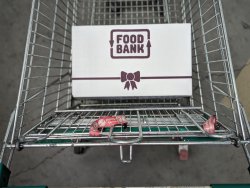Hunger Report reveals severe hardship
Our recently released Hunger Report for 2024 highlights the growing divide between those who are able to absorb or adapt to rising costs and those being left behind. More than 870,000 (48%) of Australia’s low-income households (earning less than $30,000) are experiencing food insecurity. This is the highest rate since the onset of the cost-of-living crisis, up 5% on 2022.
Now in it’s eleventh year, the report offers an insight into the state of hunger across the country and reveals more than half (59%) of all food insecure households are experiencing the most severe level of hardship, regularly skipping meals or going entire days without food.
In Western Australia, 370,000 households experienced food insecurity in the last 12 months. Shockingly, close to 200,000 households experienced severe food insecurity in the last 12 months with 1 in 5 people facing days of no food.
The findings of this report are very concerning. The cost-of-living crisis is continuing to ravage households in our state and is driving individuals to have to make impossible choices. We must not accept that 34% of people in our state are food insecure” said Foodbank WA CEO Kate O’Hara.
Choosing between paying your rent or mortgage and eating food should not be a choice that people in this state need to make.”
The most common contributing factors to food insecurity in Australia include higher rising costs of housing and essential goods, particularly food and utilities, while wages fail to keep pace.
As shocking as the findings of the Hunger Report are, they are not surprising as each of our branches is continuing to experience heightened demand, not only because of the ongoing impacts of the cost-of-living crisis, but also the increase in awareness of where to get help, coupled with core support systems, such as family and friends, no longer being able to assist.
 Contact us
Contact us Log in
Log in
